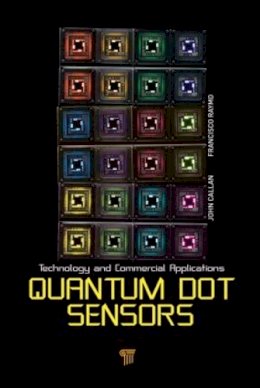John F. Callan received his BSc (Hons) in 1995 and PhD in chemistry in 1999 from the Queens University of Belfast (QUB), Northern Ireland. After working in the pharmaceutical industry for four years, he returned to QUB in 2003 to undertake a postdoctoral appointment in the lab of Prof AP de Silva. He was appointed lecturer in pharmaceutical chemistry at Robert Gordon University in Aberdeen, Scotland, in 2004 and senior lecturer in pharmaceutical science at the University of Ulster, Northern Ireland, in 2009, where he was promoted to reader in 2010. His research interests include the use of quantum dots in fluorescent sensing and photodynamic therapy applications, an area in which he has more than 30 publications. Françisco M. Raymo received a Laurea in Chemistry from the University of Messina, Italy, in 1992 and PhD in Chemistry from the University of Birmingham, UK, in 1996. He was a postdoctoral associate at the University of Birmingham, UK in 1996–1997 and at the University of California, Los Angeles, in 1997–1999. He was appointed assistant professor of chemistry at the University of Miami, Florida, in 2000 and promoted to associate professor in 2004 and full professor in 2009. His research interests combine the design, synthesis and analysis of switchable molecular construct for imaging applications. He is the author of more than 180 publications.
"This book provides very interesting insights into quantum dots technology, discussing, with adequate detail, the distinct synthetic approaches and functionalisation strategies, the importance of surface passivation and modification to guaranteeing suitable stability, biocompatibility, and reactivity, and the effect of the size, shape, and composition of quantum dots on their unique photochemical properties. … The chapters are attractively organised, and all reviewed topics are meticulously referenced. Although accessible for beginners, this book could also be very useful for experienced researchers, because it clearly emphasises crucial aspects of the material presented and avoids redundant description." —Prof. João L. M. Santos, Analytical and Bioanalytical Chemistry, 2013 "This book provides very interesting insights into quantum dots technology, discussing, with adequate detail, the distinct synthetic approaches and functionalisation strategies, the importance of surface passivation and modification to guaranteeing suitable stability, biocompatibility, and reactivity, and the effect of the size, shape, and composition of quantum dots on their unique photochemical properties. … The chapters are attractively organised, and all reviewed topics are meticulously referenced. Although accessible for beginners, this book could also be very useful for experienced researchers, because it clearly emphasises crucial aspects of the material presented and avoids redundant description." —Prof. João L. M. Santos, Analytical and Bioanalytical Chemistry, 2013

